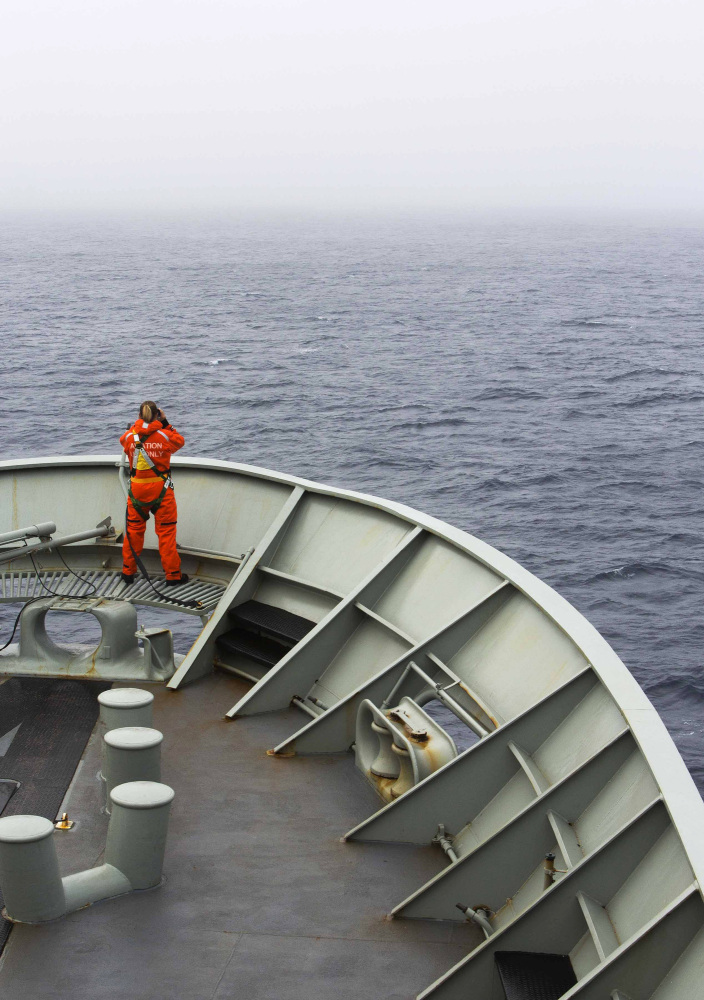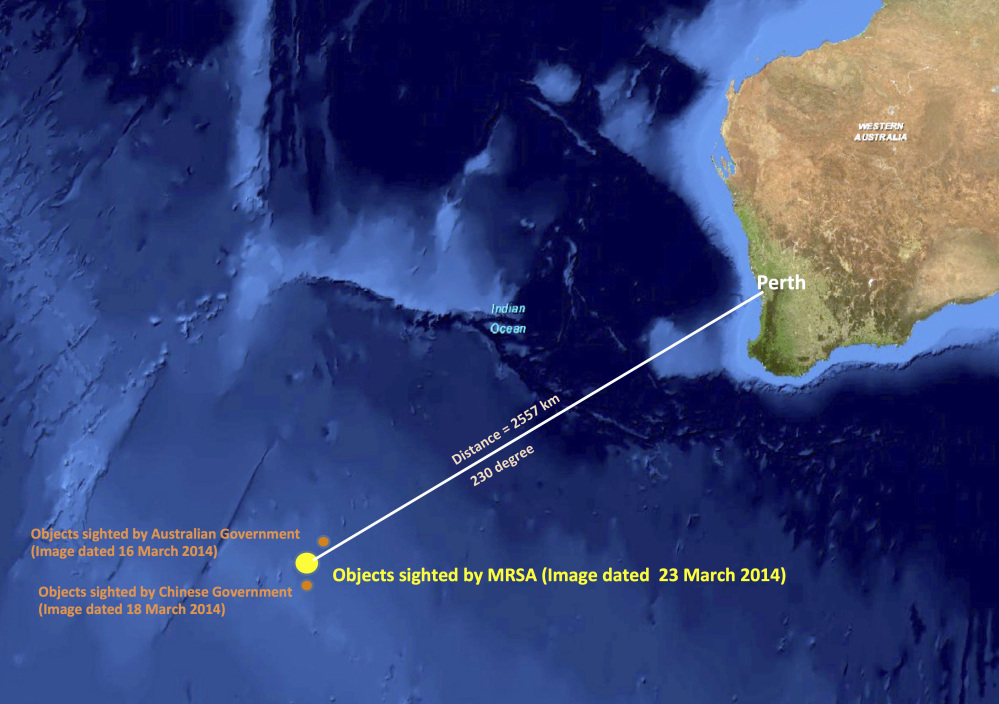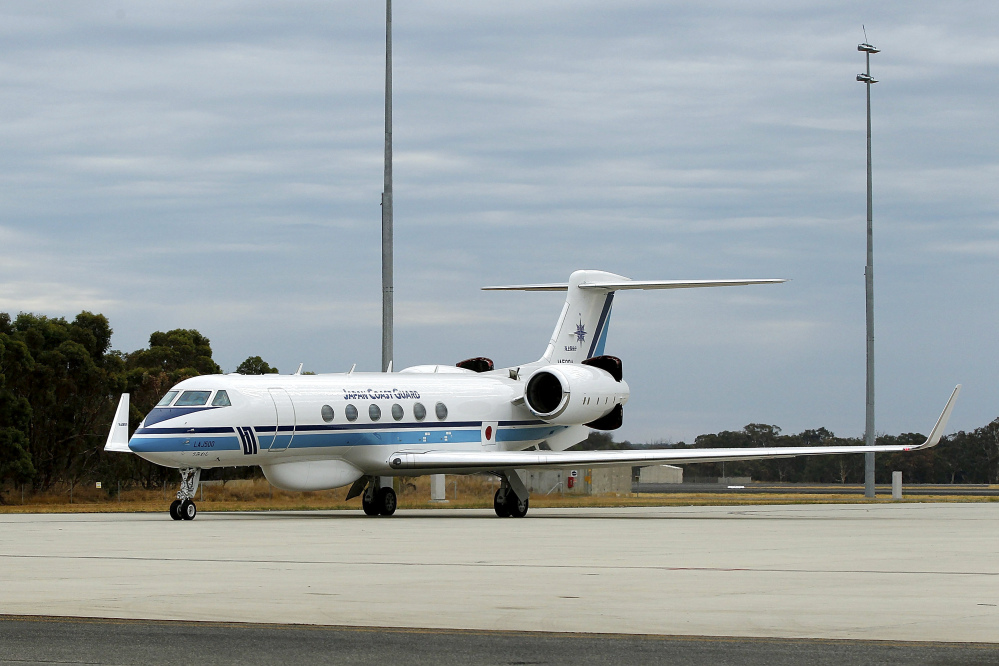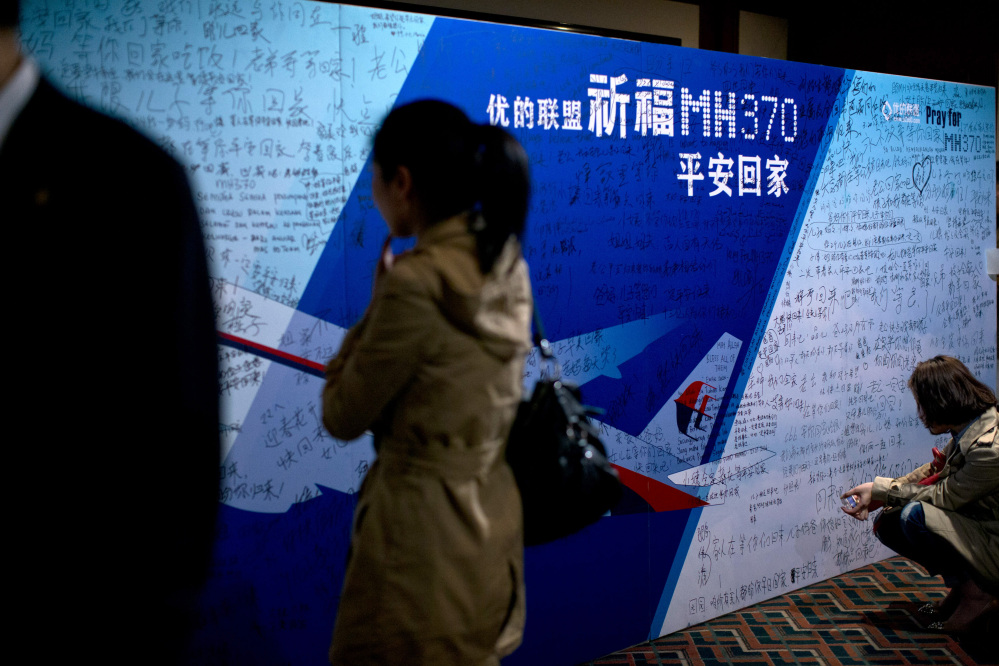PERTH, Australia — They are the most tantalizing clues yet: 122 objects spotted by satellite, floating in the turbulent Indian Ocean where officials believe the missing Malaysian jetliner went down. But bad weather, the passage of time and the sheer remoteness of their location kept answers out of the searchers’ grasp.
Nineteen days into the mystery of Flight 370, the discovery of the objects that ranged in size from 3 feet to 75 feet, offered “the most credible lead that we have,” a top Malaysian official said Wednesday.
With clouds briefly thinning in a stretch of ocean known for dangerous weather, aircraft and ships from six countries combed the waters far southwest of the Australian coast. Crews saw only three objects, one of them blue and two others that appeared to be rope.
But search planes could not relocate them or find the 122 pieces seen by a French satellite. Limited by fuel and distance, they turned back for the night.
That echoed the frustration of earlier sweeps that failed to zero in on three objects seen by satellites in recent days. Forecasters warned that the weather was likely to deteriorate again Thursday, possibly jeopardizing the search for the Malaysia Airlines Boeing 777 that vanished early March 8 en route from Kuala Lumpur to Beijing.
With the search in motion, Malaysian officials again sought to assuage the angry relatives of the flight’s 153 Chinese passengers. But Defense Minister Hishammuddin Hussein also expressed exasperation. About two-thirds of the missing are Chinese, but Hishammuddin pointedly said Chinese families “must also understand that we in Malaysia also lost our loved ones,” as did “so many other nations.”
The latest satellite images, captured Sunday and relayed by French-based Airbus Defense and Space, are the first to suggest a debris field from the plane, rather than just isolated objects. The items were spotted in roughly the same area as other objects previously seen by Australian and Chinese satellites.
Clouds obscured the latest satellite images, but dozens of objects could be seen in the gaps. At a news conference in Kuala Lumpur, Hishammuddin said some of them “appeared to be bright, possibly indicating solid materials.”
Australian officials did not say whether they received the French imagery in time for search planes out at sea to look for the objects, and did not return repeated phone messages seeking further comment. None of the three objects spotted by searchers Wednesday “were considered to be distinctive to MH370 or relevant to the satellite imagery,” Australian Maritime Safety Authority officials said.
If the objects are confirmed to be from the flight, “then we can move on to deep sea surveillance search and rescue, hopefully, hoping against hope,” Hishammuddin said.
But experts cautioned that the area’s frequent high seas and bad weather and its distance from land complicated an already-trying search.
“This is a really rough piece of ocean, which is going to be a terrific issue,” said Kerry Sieh, director of the Earth Observatory of Singapore. “I worry that people carrying out the rescue mission are going to get into trouble.”
“We’re facing an extremely challenging environment, and âunprecedented’ is an overused word that in this case applies,” said John Cox, a former airline pilot and accident investigator who is now president and CEO of Safety Operating Systems, an aviation safety consultancy.
The search resumed Wednesday after fierce winds and high waves forced crews to take a break Tuesday. Twelve planes and five ships from the U.S., China, Japan, South Korea, Australia and New Zealand were participating, hoping to find even a single piece of the jet that could offer tangible evidence of a crash and provide clues to the rest of the wreckage.
Malaysia said Monday that an analysis of the final known satellite signals from the plane showed that it had gone down in the sea, with no survivors.
That data greatly reduced the search zone to an area estimated at 1.6 million square kilometers (622,000 square miles), about the size of Alaska. Wednesday’s search focused on an 80,000-square-kilometer (31,000-square-mile) swath of ocean about 2,000 kilometers (1,240 miles) southwest of Perth.
“We’re throwing everything we have at this search,” Australian Prime Minister Tony Abbott told Nine Network television.
“This is about the most inaccessible spot imaginable. It’s thousands of kilometers from anywhere,” he later told Seven Network television. “We will do what we can to solve this riddle.”
Malaysia has been criticized over its handling of one of the most perplexing mysteries in aviation history. Much of the most strident criticism has come from relatives of the 153 missing Chinese passengers, some of whom expressed outrage that Malaysia essentially declared their loved ones dead without recovering a single piece of wreckage.
At a hotel banquet room in Beijing on Wednesday, a delegation of Malaysian government and airline officials explained what they knew to the relatives. They were met with skepticism and even ridicule by some of the roughly 100 people in the audience, who questioned how investigators could have concluded the direction and speed of the plane. One man later said he wanted to pummel everyone in the Malaysian delegation.
“We still have hope, but it is tiny, tiny,” said Ma Xuemei, whose niece was on the flight. “All the information has been confusing and unreliable.”
China dispatched a special envoy to Kuala Lumpur, Vice Foreign Minister Zhang Yesui, who met Najib and other top officials, the official Xinhua News Agency reported.
China, which has warships and an icebreaker in the search zone, has backed the demands of the Chinese families who want detailed information on how Malaysia concluded the jet went down — details that Hishammuddin said Malaysia handed over Wednesday.
China’s support for families is the likely reason why authorities — normally extremely wary of any spontaneous demonstrations that could undermine social stability — permitted a rare protest Tuesday outside the Malaysian Embassy in Beijing. Relatives chanted slogans, threw water bottles and briefly tussled with police who kept them from a swarm of journalists.
Though officials believe they know roughly where the plane is, they don’t know why it disappeared shortly after takeoff. Investigators have ruled out nothing — including mechanical or electrical failure, hijacking, sabotage, terrorism or issues related to the mental health of the pilots or someone else on board.
The search for the wreckage and the plane’s flight data and cockpit voice recorders is a major challenge. It took two years to find the black box from Air France Flight 447, which went down in the Atlantic Ocean on a flight from Rio de Janeiro to Paris in 2009, and searchers knew within days where that crash site was.
The batteries on the recorders’ “pingers” are designed to last 30 days. After that, the pings begin to fade in the same way that a flashlight with failing batteries begins to dim, said Chuck Schofield of Dukane Seacom Inc., a company that has provided Malaysia Airlines with pingers in the past. Schofield said the fading pings might last five days before the battery dies.
The Australian Maritime Safety Authority, which is coordinating the southern search operation, said a U.S. pinger locator arrived in Perth along with a Bluefin-21 underwater drone. The equipment will be fitted to the Australian navy ship the Ocean Shield, but AMSA could not say when they would be deployed.
Sieh said the seafloor in the search area is relatively flat, with dips and crevices similar to the part of the Atlantic Ocean where the Air France wreckage was found. Depths in search area range from 10,000 to 15,000 feet (3,000 to 4,500 meters).
“The idea of searching a potential area larger than the state of Texas is simply daunting,” said Peter Goelz, a former managing director of the U.S. National Transportation Safety Board. “We will need an extraordinary stroke of luck to recover floating debris, let alone identify where the wreckage is (on the ocean floor). It is just overwhelming the challenge that the investigators are facing.”
Send questions/comments to the editors.







Comments are no longer available on this story